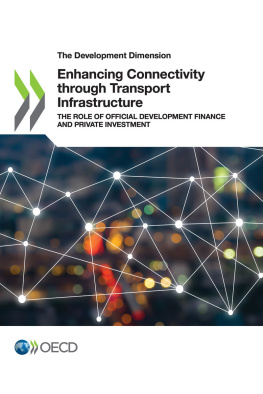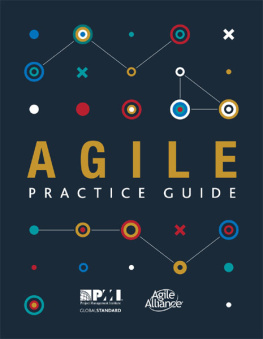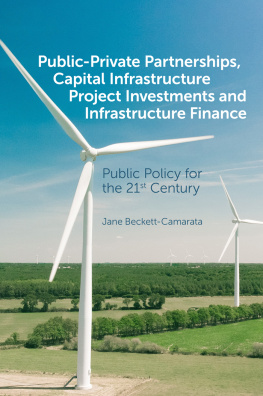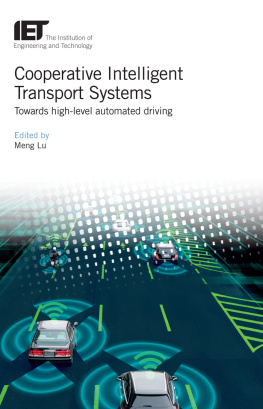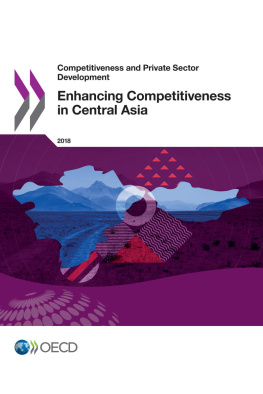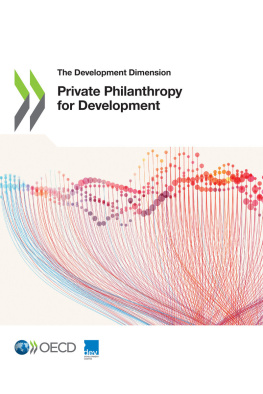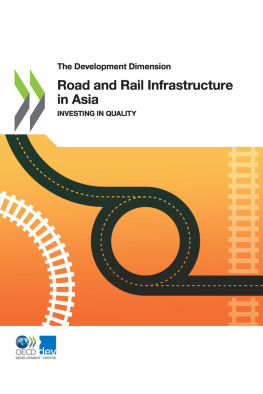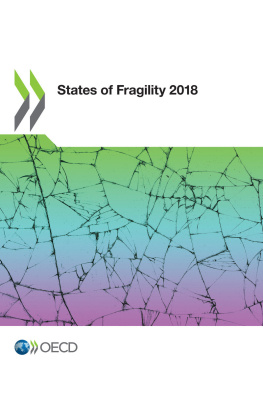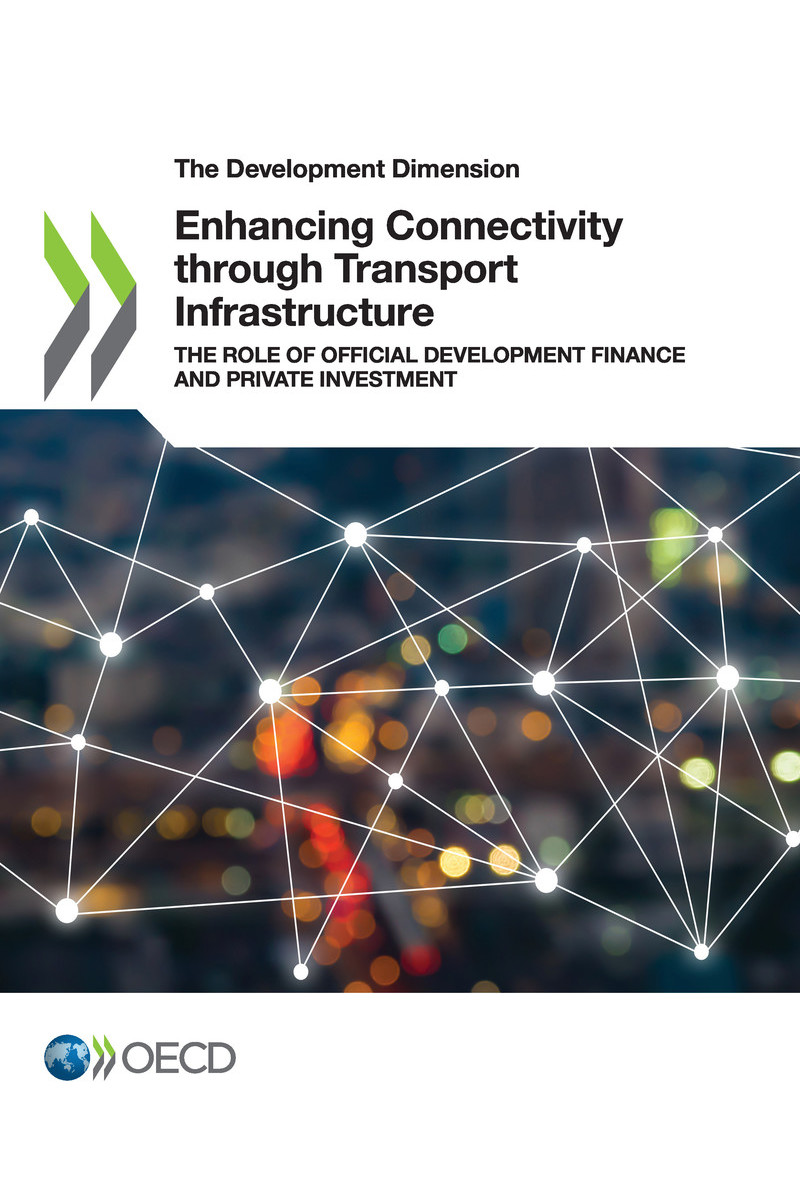The Development Dimension
Enhancing Connectivity through Transport Infrastructure The Role of Official Development Finance and Private Investment
Please cite this publication as:
OECD (2018), Enhancing Connectivity through Transport Infrastructure: The Role of Official Development Finance and Private Investment , The Development Dimension, OECD Publishing, Paris.
https://doi.org/10.1787/9789264304505-en
Metadata, Legal and Rights
ISBN: 978-92-64-30449-9 (print) - 978-92-64-30450-5 (pdf) - 978-92-64-30722-3 (HTML) - 978-92-64-30723-0 (epub)
DOI: https://doi.org/10.1787/9789264304505-en
Series: The Development Dimension
ISSN: 1990-1380 (print) - 1990-1372 (online)
This work is published under the responsibility of the Secretary-General of the OECD. The opinions expressed and arguments employed herein do not necessarily reflect the official views of OECD member countries.
This document, as well as any data and any map included herein, are without prejudice to the status of or sovereignty over any territory, to the delimitation of international frontiers and boundaries and to the name of any territory, city or area.
The statistical data for Israel are supplied by and under the responsibility of the relevant Israeli authorities. The use of such data by the OECD is without prejudice to the status of the Golan Heights, East Jerusalem and Israeli settlements in the West Bank under the terms of international law.
Photo credits: Have a nice day Photo/Shutterstock.com
Corrigenda to OECD publications may be found on line at: www.oecd.org/publishing/corrigenda .
OECD 2018
You can copy, download or print OECD content for your own use, and you can include excerpts from OECD publications, databases and multimedia products in your own documents, presentations, blogs, websites and teaching materials, provided that suitable acknowledgement of OECD as source and copyright owner is given. All requests for public or commercial use and translation rights should be submitted to .
Foreword
Development partners carry out development co-operation so that developing countries can eventually drive them out of business. In other words, the objective of development co-operation is to help these countries achieve sustainable development that will no longer require aid. For this to happen though, developing countries need a thriving private sector that invests, trades, creates jobs, produces outputs, generates income, pays taxes, reduces poverty, and enhances the well-being of their citizens.
The 2030 Agenda for Sustainable Development recognises this. It also recognises the role of development partners in mobilising the private sector. In this respect, one of the key contributions that development partners can make is to help connect developing countries to boost investment and trade, particularly by taking advantage of global value chains. Here, transport infrastructure becomes important. This is because sufficient and adequate cross-border or long-distance roads and railways as well as international ports and airports are needed to move products and people around. In addition to the hardware, the accompanying software such as harmonised and efficient regulations, common safety standards, and consideration for climate change is also necessary.
This report therefore tries to capture what bilateral and multilateral development partners are doing to help enhance connectivity of developing countries through transport infrastructure. It also elaborates on the specific challenges - due to the wide geographical coverage that involves multiple countries, many stakeholders and high costs - and what collective action can be taken to address them. As a background, the report takes stock of regional transport plans in Africa, Asia, Latin America and developing countries in Europe to place development co-operation in context. Furthermore, it analyses the allocation of official development finance for transport connectivity, particularly in relation to the distribution of private investment for the same types of infrastructure. Finally, the question of how large the financing gap is for transport connectivity to meet the Sustainable Development Goals and what development partners can do to fill this gap is also discussed.
The world is changing as we speak. Tectonic shifts in technological innovation, patterns of production, modalities of finance, as well as the political agenda of nations and regions that affect investment and trade of developing countries continue to surprise us. But one thing is certain - these countries need to be better connected. As such, we hope that this report provides a comprehensive picture of the current state of play as well as food for thought on what can be done to help enhance connectivity through transport infrastructure so that no one will be left behind.
Acknowledgements
This report was prepared under the direction of Jorge Moreira da Silva, Director of the OECD Development Co-operation Directorate. It was managed by Kaori Miyamoto, Senior Policy Analyst, with extensive assistance from Yingyin Wu, Junior Policy Analyst. Special thanks go to: Owen Hill, Paula Rettl, Omer Tekdogan, Viet Tran, Emilio Chiofalo, and Anna Vindics for their in-depth research and data analysis; Fernando Mitsura for the data analysis on the private flows; Richard Carey for the helpful advice and information; Annalisa Primi, Raffaele della Croce, Andr Laboul, Iza Lejarraga, Alin Horj, Christoph Weigl, as well as Gerald Olivier of the World Bank for facilitating opportunities to present the paper in conferences; Ccile Sangar, Tom Hos, Olivier Bouret, Frans Lammersen, Takayoshi Kato, Dejan Makovek, Jari Kauppila, Stephen Perkins, and Michael Gonter for providing various inputs; as well as Stacey Bradbury and Niamh Cahill-Billings for proof reading and design.
Furthermore, the report would not have been possible without the constructive comments and meticulous factual checking by numerous officials of the Development Assistance Committee and multilateral development banks. Finally, this research benefited greatly from the strong interest and helpful funding by the governments of Norway and Japan.
Abbreviations and acronyms
AAAA
Addis Ababa Action Agenda
ABC
Brazilian Cooperation Agency (Agncia Brasileira de Cooperao)
AFD
French Development Agency
AfDB
African Development Bank
AIIB
Asian Infrastructure Investment Bank
ARTIN
African Regional Transport Infrastructure Network
AsDB
Asian Development Bank
ASEAN
Association of Southeast Asian Nations
AUC
African Union Commission
BMZ
Federal Ministry for Economic Cooperation and Development (Bundesministerium fr wirtschaftliche Zusammenarbeit)
BNDE
Brazilian Development Bank (Banco Nacional de Desarrollo Econmic)
BRI
Belt and Road Initiative
CAREC
Central Asia Regional Economic Co-operation
CBTA
Cross-Border Transport Agreement

